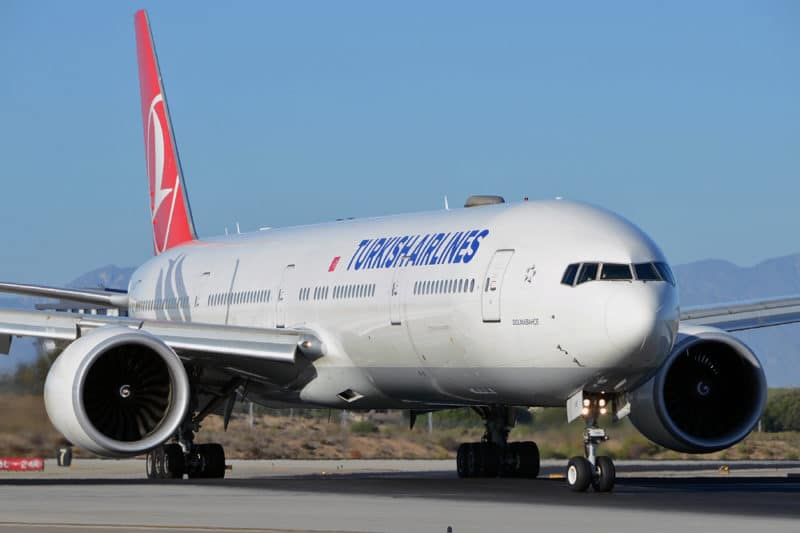Aviation
Turkish airlines eyes nonstop flight towards Australia with A350-1000 OR 777X

For nonstop flights to Australia, Turkish Airlines is debating between using Boeing 777X and Airbus A350-1000XWB aircraft, and it has also made a choice on 30 regional aircraft. A350-900s and 777-300ERs are already flown by the airline. However, for ultra long distance services from Istanbul to Sydney and Melbourne, it might choose a different version like the A350-1000XWB. as per the source, On the sidelines of the IATA annual general meeting in Doha, Turkey Airlines Chairman Ahmed Bolat stated.
Australia is the last continent which Turkish Airlines is not flying to.”
The route is serviced by A340-500s or Chronicles. According to the studies, those aircraft caused a significant loss. The plane is also being evacuated by the carrier, and it will be the appropriate time when we make a decision on those aircraft. Bolat wanted to see how both types developed. They are not required to be a launch customer.
Bolat does not compare Turkish Airlines’ nonstop service to Australia with Qantas’ Project Sunrise, which intends to run direct flights from Australia to London and New York. He explained that “this [Sunrise] is a distinct product with less capacity.” “We need more seats, but we won’t alter our business strategy.”
In May, Qantas announced firm orders for 12 modified A350-1000s, with service planned for 2025 to 2028. 238 seats, including 6 first-class suites, 52 business-class suites, 40 premium economy seats, and 140 in economy, will be available. The planes, which Qantas claims can travel nonstop from Australia to practically anywhere in the world and it will be used on Project Sunrise flights starting in late 2025.
Qantas Confirms A350 Ultra-Long Haul Flights, Announces Major Aircraft Order
Turkish Airlines estimates that it will take them roughly 17 hours to travel nonstop from Istanbul to Sydney and Melbourne. Services that are continuous may begin in 2026 or 2027.
Bolat stated that “we need to see the Boeing 777X or Airbus A350-1000 proof of its maturity.”
The Istanbul-based Star Alliance member already has codeshare links to Australia before the ultra-long-range capacity is available. The carrier is in talks with countries like Malaysia or Indonesia for fifth freedom rights and is also searching for partnerships in Australia. “We could share the markets with the home carriers if we had that [fifth freedom],” he remarked. “With the current fleet, we are unable to provide nonstop trips. Because it is more convenient to utilize, we are speaking with our codeshare partners.
Thanks to travelers connecting through Istanbul to its global network, Turkish Airlines already makes a $40 million profit each year in the Australian market.
A220 or Embraer regional aircraft for Turkish airlines.
Separately, Turkish Airlines will make a decision regarding to the tender for 30 A220 or Embraer aircraft within the following two to three months. The manufacturers of the engines for these two types of aircraft as well as the pilots who will fly them are being worked with it as a result it will offers that they were gathered, according to Bolat. “We will decide after our research on regional aircraft is complete. About 30 aircraft will be available in the next two to three years. Turkish Airlines’ fleet had 376 aircraft as of the end of May.

Aviation
Boeing, Antonov to Collaborate on Defense Projects

– MOU represents Boeing’s commitment to work with Ukrainian industry
– Includes exploring opportunities for collaborating on in-country support of Unmanned Aerial Systems
A Memorandum of Understanding was signed today by Boeing and Antonov Company to investigate potential collaboration on defense-related projects.
“We’re happy to keep collaborating with the Antonov Company to help Ukraine’s economic development and expansion,” stated Ted Colbert, CEO and president of Boeing Defence, Space, & Security.
Airbus and the Antonov An-225: The Best Partnership:Click here
“This agreement demonstrates our ongoing efforts to find more opportunities to work with Ukrainian industry, which was underscored by our signing of the Ukrainian Defence Industry Compact earlier this year.”
The areas of potential collaboration identified in the agreement consist of training, logistical support and overhaul services for tactical Unmanned Aerial Systems utilized by the Ukrainian Armed Forces, which includes the ScanEagle. In addition, the companies will also explore opportunities for Antonov to provide engineering support to Boeing.
The six largest cargo aircraft ever built in the aviation industry:Click here
“A strong, innovative, and efficient defense industry is key to sustainable economic development and national security, and we are extremely excited to collaborate with Boeing,” said Ievhen Gavrylov, CEO of Antonov Company.
This agreement brings a whole new level of opportunity to implement the latest and most effective solutions – in addition to the possibility of future projects with Boeing in the aerospace and defense industry.”
-

 Travel1 week ago
Travel1 week agoAir India to Expand US Operations with Three New Routes After a Decade
-

 Travel2 weeks ago
Travel2 weeks agoWhy We Should Avoid These Stamps in a Passport
-

 Airlines1 month ago
Airlines1 month agoInvestigations Reveal Fake Chinese Titanium in Boeing and Airbus Jets
-

 Tech4 weeks ago
Tech4 weeks agoChina’s CATL Plans 1,800-Mile Electric Plane Launch by 2027
-

 Airport3 days ago
Airport3 days agoTop 10 Largest Airports in the World by Size
-

 Aerospace4 weeks ago
Aerospace4 weeks agoChina’s Fighter Jets Turn Wings into Autonomous Drones
-

 Airlines4 days ago
Airlines4 days agoAir India Rolls Out A350s for Delhi-New York JFK and Newark Routes
-

 Defence3 weeks ago
Defence3 weeks agoBoeing Enhances Chinook with New Engines and Block II Upgrades at $96 Million







